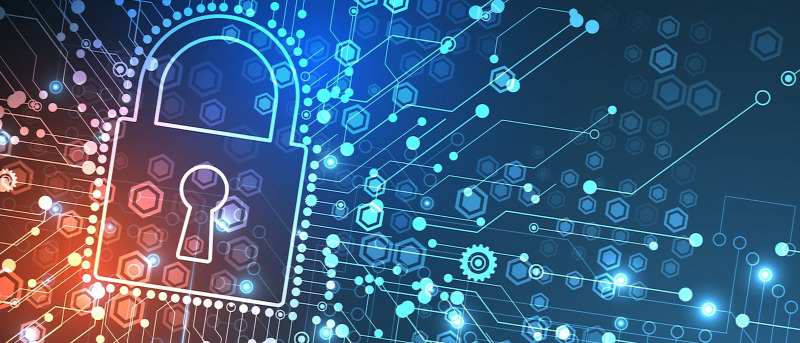What is virtual security?
Virtual security, also known as cybersecurity or information security, refers to the practice of protecting computer systems, networks, and data from unauthorized access, damage, theft, or disruption. It involves measures and protocols designed to safeguard virtual assets, such as software, hardware, electronic systems, and digital information, against various threats and risks.
Virtual security encompasses a wide range of technologies, processes, and practices implemented to ensure the confidentiality, integrity, and availability of digital resources. It aims to prevent unauthorized access, data breaches, identity theft, malware attacks, and other forms of cybercrime.
Key aspects of virtual security include:
-
Authentication and Access Control: Verifying the identity of users and granting appropriate access privileges to digital resources based on their authorization levels.
-
Encryption: Transforming data into an unreadable format to protect it from unauthorized access, ensuring that only authorized individuals can decrypt and access the information.
-
Firewalls and Intrusion Detection/Prevention Systems: Implementing barriers and monitoring systems to detect and block unauthorized access attempts, network intrusions, and malicious activities.
-
Antivirus and Anti-malware Solutions: Using software tools to detect, prevent, and remove malicious software such as viruses, worms, trojans, ransomware, and spyware.
-
Secure Network Architecture: Designing and configuring networks with secure protocols, strong encryption, and other measures to protect data transmission and prevent eavesdropping or data interception.
-
Incident Response and Recovery: Establishing protocols and procedures to quickly identify, respond to, and recover from security incidents or breaches, minimizing potential damage and downtime.
-
Employee Training and Awareness: Educating users about best practices, security policies, and potential risks to foster a culture of security awareness and responsible digital behavior.
-
Vulnerability Assessments and Penetration Testing: Regularly evaluating and testing systems, networks, and applications for vulnerabilities, weaknesses, and potential entry points for attackers.
-
Data Backup and Disaster Recovery: Creating backup copies of important data and implementing strategies to recover systems and data in the event of data loss or system failures.
-
Regulatory Compliance: Adhering to legal and industry-specific requirements, such as data protection laws or industry standards, to ensure the protection of sensitive information.
Virtual security is an ongoing process that requires constant monitoring, updates, and adaptation to emerging threats and evolving technologies. It is crucial for individuals, organizations, and governments to maintain robust virtual security practices to safeguard sensitive information and maintain the trust and integrity of digital systems.

What is remote monitoring?
Remote monitoring, also known as remote management or remote surveillance, refers to the practice of monitoring and managing systems, networks, or devices from a remote location. It involves using various tools, technologies, and protocols to gather information, perform diagnostics, and control or analyze the status and performance of a target system or device without being physically present at the location.
Remote monitoring typically relies on network connectivity and communication protocols to establish a connection between the monitoring station and the target system. It allows administrators, technicians, or operators to observe and manage the monitored systems from a centralized or remote location, providing real-time insights and control over the monitored assets.
Common examples of remote monitoring include:
-
Network Monitoring: Monitoring network infrastructure, such as routers, switches, and firewalls, to track network performance, detect anomalies, and identify potential issues or security threats.
-
Server Monitoring: Monitoring servers to ensure their availability, performance, and security. This involves tracking CPU usage, memory usage, disk space, network traffic, and other metrics to identify bottlenecks or potential problems.
-
Device Monitoring: Monitoring devices, such as Internet of Things (IoT) devices, industrial equipment, or medical devices, to collect data about their operational status, performance, and potential faults.
-
Security Monitoring: Monitoring security systems, including video surveillance cameras, access control systems, or intrusion detection systems, to detect and respond to security incidents or breaches.
-
Application Monitoring: Monitoring the performance and availability of software applications, tracking metrics like response time, resource usage, and error rates to identify and resolve issues.
-
Environmental Monitoring: Monitoring environmental conditions such as temperature, humidity, or air quality in data centers, server rooms, or other critical facilities to ensure optimal operating conditions.
Remote monitoring often involves the use of specialized software, monitoring tools, and sensors to collect data and transmit it to the monitoring station. The collected data can be analyzed, visualized, and used to trigger alerts or automated actions based on predefined thresholds or conditions.
Benefits of remote monitoring include:
-
Proactive Issue Detection: Remote monitoring allows for the early detection of problems or anomalies, enabling swift action before they escalate into more significant issues or cause system failures.
-
Cost and Time Savings: By eliminating the need for physical presence at the monitored location, remote monitoring reduces travel costs, saves time, and enables efficient management of geographically dispersed assets.
-
Improved Efficiency: Remote monitoring provides real-time visibility and insights into system performance, allowing for optimized resource allocation, capacity planning, and streamlined maintenance or troubleshooting.
-
Enhanced Security: Remote monitoring can help identify security threats, unauthorized access attempts, or suspicious activities, allowing for prompt response and mitigation measures.
-
Data-Driven Decision Making: The data collected through remote monitoring can be analyzed to identify trends, patterns, and areas for improvement, enabling informed decision-making and optimization of operations.
Overall, remote monitoring plays a crucial role in ensuring the smooth operation, security, and efficiency of various systems, networks, and devices, regardless of their physical location.


